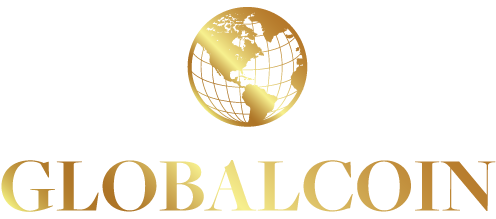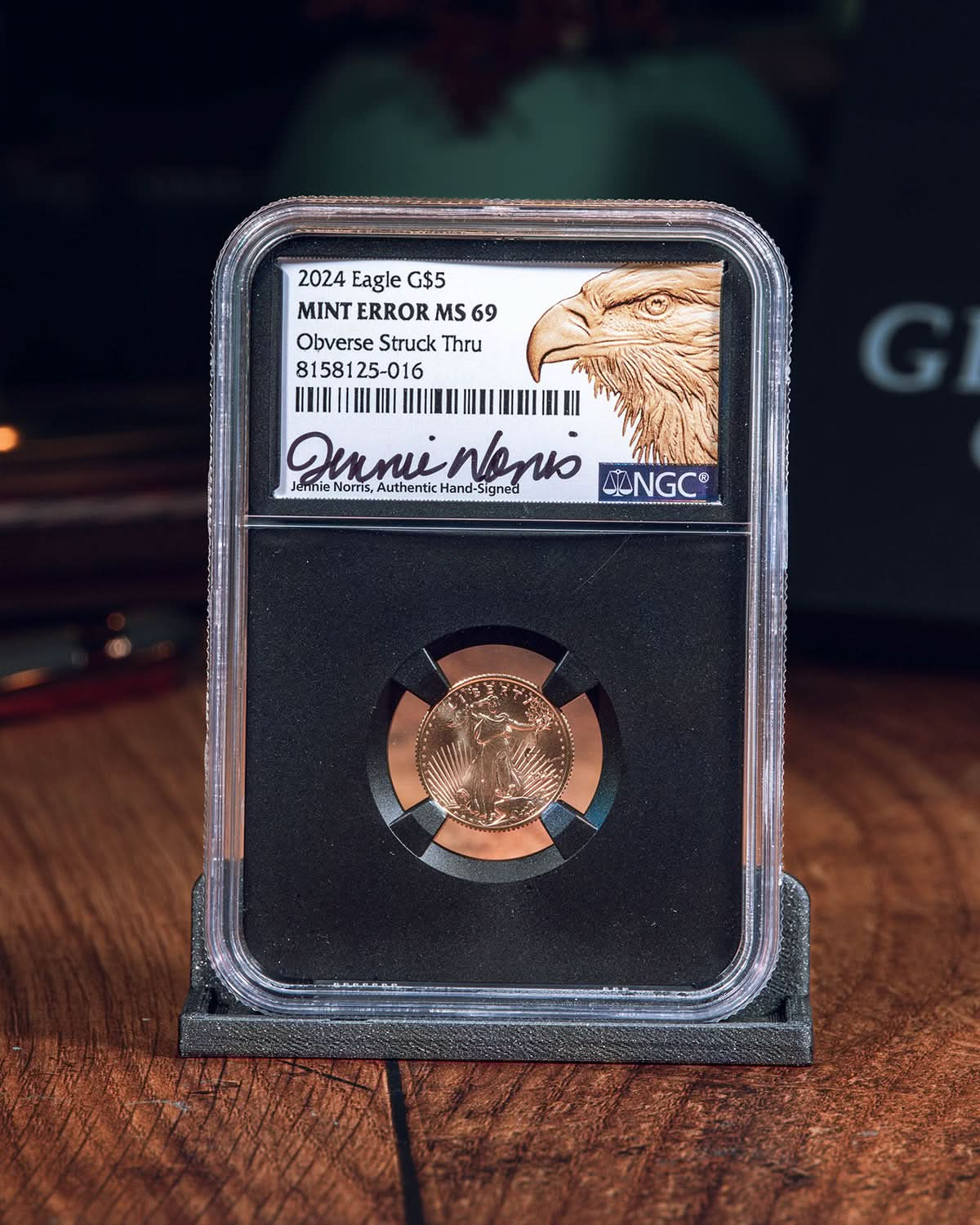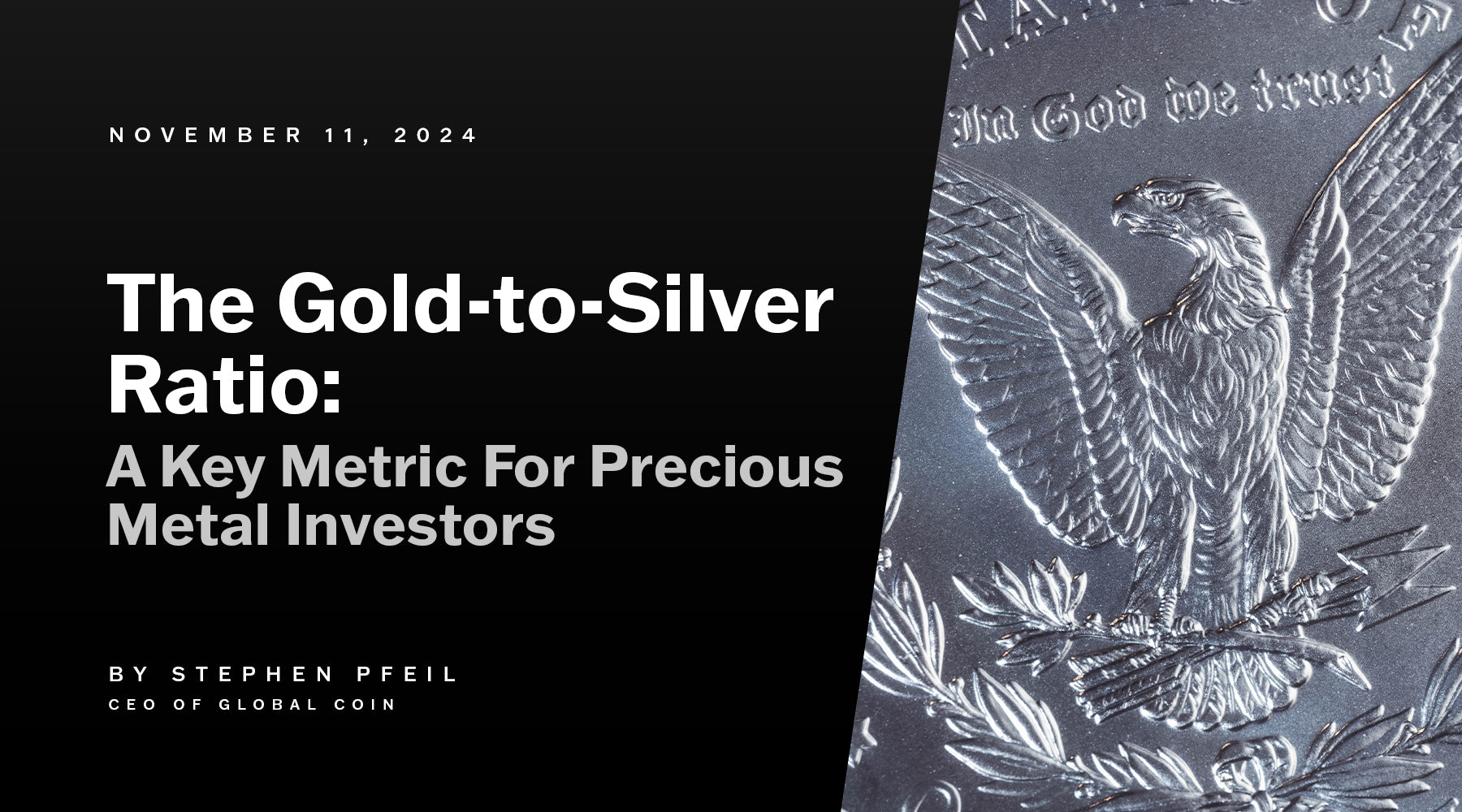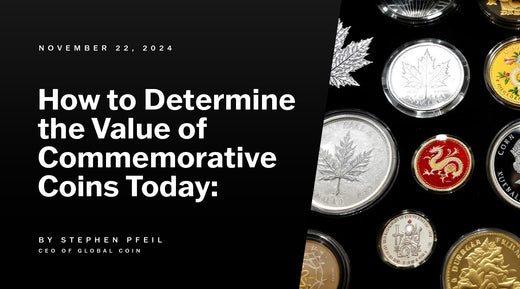Building a Strong Precious Metals Investment Portfolio: Tips and Strategies
Starting a precious metals investment portfolio can be a rewarding journey if approached strategically. By understanding the key characteristics of gold, silver, platinum, and palladium and knowing how to integrate them effectively into your broader financial strategy, you can build a diversified and resilient portfolio. This updated guide will provide deeper insights into incorporating precious metals coins and reference Global Coin as a trusted source for high-quality products.
Key Takeaways

-
Precious metals like gold, silver, platinum, and palladium hedge against inflation and economic uncertainty while offering diversification.
-
Coins are pivotal in building a balanced metals portfolio due to their liquidity and collectible value.
-
Trusted dealers such as Global Coin are critical for ensuring the authenticity and quality of your investments.
Understanding Precious Metals Investment
Precious metals, such as gold, silver, platinum, and palladium, hold intrinsic value due to their scarcity, industrial usefulness, and investment properties. Gold, silver, and platinum are the primary focus for investors because of their liquidity and ease of trading. These metals are often considered less risky investments, providing a safety net during economic turbulence.
Investors must determine their investment purpose, exit strategy, and liquidity needs before investing in the best precious metals. Understanding why you're investing—whether for wealth preservation, portfolio diversification, or protection against inflation—is crucial. Assessing the risks and rewards is equally important, particularly for beginners who must understand the motivations behind their choices.
Understanding your financial goals and the specific characteristics of each metal is key to a well-rounded the best precious metals investment products approach. This foundational knowledge sets the stage for making informed decisions and building a robust investment portfolio.
Key Reasons to Invest in Precious Metals

Precious metals are often viewed as a hedge against economic uncertainty and inflation. Economic downturns typically increase high demand for these assets as investors seek safe havens. Geopolitical tensions further drive investors towards gold investing and silver, reinforcing their status as reliable stores of value.
These metals play a significant role in portfolio diversification. They usually perform well when equities fall and have a low correlation with stocks and bonds. This diversification can stabilize your portfolio and protect against market volatility, making the best precious metals attractive for any investment strategy.
Types of Precious Metals for Investment
Gold, silver, platinum, and palladium are the primary precious metals stocks for investment. Investors commonly seek these metals. Each metal has unique market and investment characteristics that can influence your decisions. Diversifying investments across these metals can mitigate risk and enhance portfolio stability.
Novice investors should weigh the benefits of gold bullion against other metals as a crucial step. Grasping each metal's distinct advantages and challenges will guide more informed investment choices.
Gold
Gold bullion, often referred to as the “yellow metal,” is renowned for its role as a store of value. It boasts the largest market and greatest liquidity among precious industrial metals, making it a go-to choice for many investors. Insuring physical gold's stability is further enhanced by its limited industrial use, which shields it from economic downturns.
Despite these obstacles, physical gold remains continues to be a fundamental component of precious metals investments. Gold-focused mutual funds also highlight its enduring appeal as a stable asset in the market, a trend that is supported by insights from the World Gold Council.
Silver
Silver serves a dual purpose, functioning both as an industrial metal and a store of value. Its industrial investors demand is significantly driven by its use in solar energy technology, making it a critical component in the renewable energy of these precious metals sector. As a result, silver prices are influenced by both its extensive industrial applications and investment or investors demand.
Silver's price is more volatile than gold's, largely due to its broader range of uses and fluctuating industrial demand. Despite storage challenges due to its lower price point, silver remains an appealing option for those starting their precious metals investment journey. Unlike gold, silver offers a more affordable entry point while still providing exposure to the precious metals market.
Platinum
Platinum, part of the platinum-group metals (PGMs), is mainly used in vehicular catalytic converters to reduce harmful emissions. Although it has historically been valued higher than gold, its current investment value is somewhat lower.
The supply of platinum bullion is largely concentrated in South Africa and Russia, which could lead to potential supply challenges that may influence prices. Growing demand driven by automotive manufacturing and renewable technologies could have a positive effect on platinum's prices and it's market. According to the World Platinum Investment Council, these factors could play a significant role in shaping the future of platinum's pricing and availability.
Palladium
Palladium is extensively used in the automotive industry, especially in catalytic converters, with around 80% of global palladium serving this purpose. Its inclusion in investment portfolios adds an extra layer of diversification, although it is not as heavily emphasized as other precious metals.
Although palladium's primary use is industrial, its role in diversification should not be underestimated. The metal's unique characteristics can provide additional stability and growth potential.
Methods of Investing in Precious Metals

There are various methods best metals to invest in with distinct advantages. Options include investing in physical forms like bars and coins, purchasing the best precious metals shares in mining companies, or choosing ETFs that track precious metal prices.
Knowing these methods and their benefits and challenges will help you choose the right investment strategy. Whether you prefer physical metals' tangible security or digital investments' convenience, options are available to suit your needs.
Physical Precious Metals
Physical precious metals encompass rounds, bars, and coins. Rounds, often made of silver or copper, appeal to new investors due to their beautiful designs and ease of investment. Metal bars offer flexibility and can quickly build a large precious metal portfolio, with gold bars starting at one gram and silver bars typically starting at one ounce.
However, investing in physical metals presents challenges. Transaction fees can reach up to 5% of the traded amount, and secure storage solutions are necessary to protect your investment. This includes considering storage options like safe deposit boxes or specialized vaults, which can add to the overall cost of your investment. Additionally, insurance costs should be factored into safeguard against potential theft or damage.
Despite these hurdles, physical precious metals remain popular among many precious metal investors. They provide direct exposure to the metal's price movements and serve as a tangible asset that can be held outside the financial system. This can be particularly appealing during times of economic uncertainty or currency devaluation, as physical metals are not subject to the same risks as digital or paper assets.
Furthermore, owning physical metals can be a strategic choice for those looking to diversify their investment portfolio with a tangible asset class. It can also offer a sense of security and control over one's investment, as investors can physically possess and store their metals. As such, physical precious metals continue to attract both retail investors and institutional investors seeking to enhance their portfolio's resilience against market volatility.
How to Use Precious Metals Coins in Your Portfolio
Coins are an excellent way to incorporate the best precious metals into your investment technique. They offer flexibility, liquidity, and the added high economic value of collectible appeal. Here's how you can use coins effectively:
1. Start with Gold Coins
Gold coins are a cornerstone for stability and long-term value. They are highly liquid and globally recognized, making them a reliable choice for both beginners and seasoned investors.
-
Examples: American Gold Eagles and Canadian Maple Leafs.
-
Best Practice: Allocate 50-60% of your metals portfolio to gold prices for wealth preservation.
2. Diversify with Silver Coins
Silver coins are ideal for balancing affordability and potential growth. Their industrial applications make silver prices more dynamic than gold, offering opportunities for higher returns.
-
Examples: Silver Krugerrands and Silver American Eagles.
-
Best Practice: Use silver coins to add diversity and capitalize on market trends in renewable energy and technology.
3. Add Growth Potential with Platinum and Palladium Coins
Including platinum and palladium coins in your portfolio introduces higher growth potential. These metals are rarer than gold and silver and are heavily used in industry.
-
Examples: Platinum American Eagles and Palladium Canadian Maple Leafs.
-
Best Practice: Limit allocations to 5-15% of your total portfolio to manage risk while seeking high returns.
4. Prioritize Graded Coins Over Raw Coins
When building a coin portfolio, graded coins offer distinct advantages over raw, ungraded coins. A professionally graded coin provides a certified guarantee of its authenticity, condition, and value, which is crucial for protecting your investment. Graded coins are also more liquid, as buyers and collectors alike trust the third-party grading standards, making them easier to trade or sell.
-
Best Practice: Look for coins graded by reputable agencies such as PCGS or NGC to ensure quality, transparency, and a higher likelihood of appreciation in value.
Exchange Traded Funds (ETFs)
Exchange-traded funds (ETFs) provide a convenient way for investors to gain exposure to expensive precious metals without owning the physical products. ETFs facilitate easy buying and selling, simplifying the investment process.
A key advantage of mutual funds is eliminating the need for physical storage, making them attractive to many investors. However, be aware of management fees associated with ETFs, as these mutual funds can impact overall returns.
Mining Stocks
These stocks include various investment types, from junior miners to larger, more established mining companies. These companies can benefit from rising prices of the best precious metals because their relatively fixed costs increase profit margins.
Investing in these stocks carries risks, including accidents, cost overruns, and political risks. Established mining companies offer more stability, better cash flow, and the potential for dividends, making them viable for investors.
Factors Influencing Precious Metals Prices
Economic factors, interest rates, and geopolitical factors all influence precious metals prices. Economic conditions impact silvery metal more due to its significant industrial use.
Interest rates significantly affect the attractiveness of precious metals investments. Lower rates decrease the opportunity cost of holding metals, often leading to higher prices. Additionally, central bank policies and the emergence of cryptocurrencies as alternative stores of value play important roles.
Building a Diversified Precious Metals Portfolio

Balancing various metals in your portfolio helps mitigate risk and enhance stability. Typically, investors allocate between 5% to 15% of their portfolios to precious metals to achieve diversification.
Regularly monitoring market trends and consulting a financial advisor can help you tailor your investment strategy to meet your goals. Diversifying across different metals and investment methods builds a portfolio that is resilient against market volatility.
Risks and Challenges in Precious Metals Investment
Investing in precious metals involves its share of risks and challenges. Market volatility can cause substantial price swings, making these investments risky. Metals require secure storage, which can incur additional costs like transportation and insurance.
Emerging risks like the rise of cryptocurrencies as alternative stores of value add a new dimension to the investment landscape. Additionally, the lack of income generation from precious metals can potentially drag down overall investment returns.
Tips for New Precious Metals Investors
New investors should start with well-established metals like gold stocks and silver to minimize volatility. Limiting the allocation of precious metals in your portfolio is a smart strategy for managing risk.
It's crucial to understand that precious metals do not generate income. These assets serve as a store of value rather than a source of cash flow, so balancing them with other income-generating investments is essential.
Outlook for Precious Metals in 2025

The outlook for precious metals investment in 2025 is positive, supported by falling inflation rates and stable macroeconomic conditions. These factors make precious metals an attractive investment option for the coming year.
As the global economy shows signs of stability, the demand for precious metals is expected to remain strong. This positive trend highlights the potential for continued growth in precious metals investments.
Summary
Building a strong precious metals investment portfolio involves understanding the unique characteristics of each metal, the reasons for investing, and the various methods available. Diversification and risk management are crucial components of a successful strategy.
As we move into 2025, the positive economic outlook provides a favorable environment for precious metals investments. The long term outlook for precious metals market is also excellent, with US Federal Debt rising by $1 trillion dollars every 90 days. By following the tips and strategies outlined in this guide, you can confidently navigate the market and build a robust investment portfolio.
Frequently Asked Questions About Building a Precious Metals Investment Portfolio
Why should I invest in precious metals?
Investing in precious metals provides a reliable hedge against economic uncertainty and inflation while enhancing diversification. This strategy can help safeguard your assets during volatile market conditions.
What are the main types of precious metals for investment?
The primary precious metals for investment are gold, silver, platinum, and palladium. These metals are widely recognized for their value and potential return on investment.
How can I invest in precious metals?
Investing in precious metals can effectively be done through physical purchases, exchange-traded funds (ETFs), mining stocks, or digital platforms. Each method offers unique advantages, allowing you to choose according to your investment technique.
What are the risks of investing in precious metals?
Investing in precious metals carries risks such as market volatility, the need for secure storage solutions, and increasing competition from cryptocurrencies. It is crucial to carefully evaluate these factors before investing.
What is the outlook for precious metals in 2025?
The outlook for precious metals in 2025 is positive, driven by decreasing inflation rates, a continued rise in sovereign debt and stable macroeconomic conditions. This environment is likely to support their value.








2 comments
This blog truly shines as a guide for building a strong precious metals portfolio! As someone who regularly uses Bullion Mentor to compare metals and explore market trends, I love how you’ve broken down complex strategies into actionable insights. It’s a must-read for anyone serious about safeguarding their wealth—well done!
susan brown
An excellent guide for anyone looking to build a precious metals portfolio! 🌟 I love how clearly it breaks down strategies, risks, and opportunities across gold, silver, platinum, and palladium. Perfect mix of insights for beginners and experienced investors. 📊💰
polly jones
Leave a comment
This site is protected by hCaptcha and the hCaptcha Privacy Policy and Terms of Service apply.